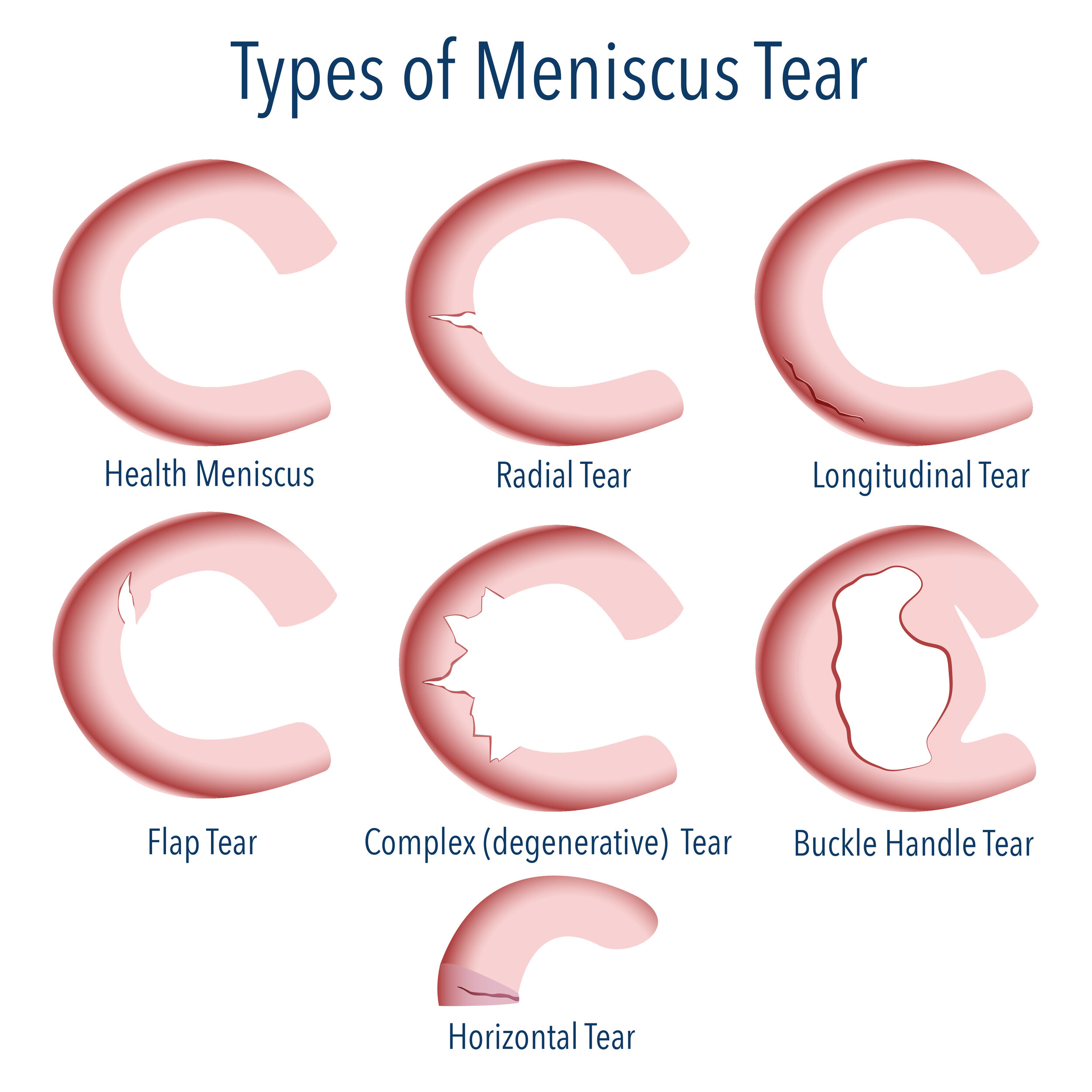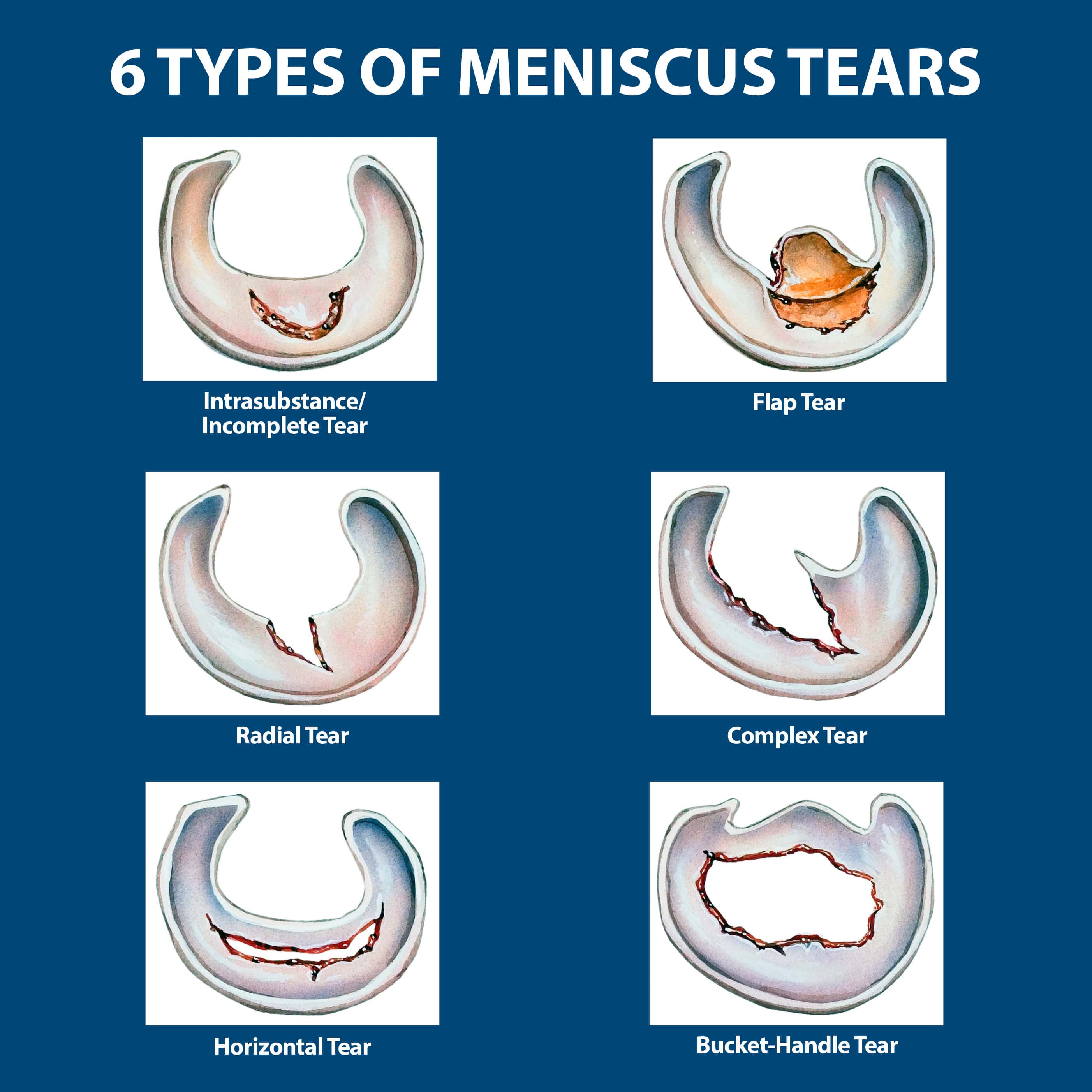Anatomy and Function of the Meniscus: Meniscus Tear

The meniscus is a C-shaped piece of cartilage that acts as a shock absorber and provides stability to the knee joint. It is located between the femur (thighbone) and the tibia (shinbone). There are two menisci in each knee: the medial meniscus on the inner side of the knee and the lateral meniscus on the outer side.
Structure of the Meniscus
The meniscus is composed of fibrocartilage, which is a tough, flexible tissue that is able to withstand a lot of force. It is made up of collagen fibers, which are arranged in a way that allows the meniscus to bend and twist. The meniscus is thicker on the outer edge and thinner on the inner edge, which helps it to distribute weight evenly across the knee joint.
Function of the Meniscus
The meniscus plays a crucial role in the proper functioning of the knee joint. It helps to:
- Distribute weight: The meniscus helps to distribute the weight of the body evenly across the knee joint, reducing the stress on the cartilage and bones.
- Absorb shock: The meniscus acts as a shock absorber, cushioning the impact of the bones during activities such as walking, running, and jumping.
- Stabilize the joint: The meniscus helps to stabilize the knee joint, preventing the femur from sliding off of the tibia.
Types of Meniscus Tears
Meniscus tears can occur due to a sudden injury, such as a twisting or pivoting motion, or over time due to wear and tear. They can also occur due to degeneration of the meniscus, which is more common in older adults.
- Longitudinal tear: This is the most common type of meniscus tear. It occurs when the meniscus is torn lengthwise.
- Transverse tear: This type of tear occurs across the width of the meniscus.
- Radial tear: This tear occurs in a radial pattern, like spokes on a wheel.
Causes and Risk Factors

A meniscus tear is a common knee injury that occurs when the meniscus, a C-shaped piece of cartilage that acts as a shock absorber in the knee joint, is torn. The meniscus can be torn by a sudden twisting or forceful impact to the knee. It can also occur gradually over time due to wear and tear.
Meniscus tears can be caused by a variety of factors, including sports injuries, age-related degeneration, and trauma.
Sports Injuries, Meniscus tear
Sports injuries are a common cause of meniscus tears. These injuries often occur during activities that involve twisting, pivoting, or sudden changes in direction. Examples of sports that commonly result in meniscus tears include:
- Football
- Basketball
- Soccer
- Tennis
- Skiing
Age-Related Degeneration
As people age, the meniscus can become thinner and weaker. This can make it more susceptible to tears, even from minor injuries.
Trauma
Trauma, such as a car accident or a fall, can also cause meniscus tears.
Risk Factors
Several factors can increase the risk of developing a meniscus tear. These factors include:
- Age: The risk of a meniscus tear increases with age. This is because the meniscus naturally thins and weakens over time.
- Activity Level: People who participate in high-impact activities, such as running, jumping, and pivoting sports, are at a higher risk of developing a meniscus tear.
- Previous Knee Injuries: People who have had previous knee injuries, such as ligament tears or cartilage damage, are at a higher risk of developing a meniscus tear.
Activities that Can Contribute to Meniscus Tears
Certain activities can put more stress on the meniscus and increase the risk of a tear. These activities include:
- Twisting or Pivoting Movements: These movements can put a lot of stress on the meniscus, especially if they are done suddenly or forcefully.
- Squatting or Kneeling: These activities can also put stress on the meniscus, especially if they are done repeatedly or for long periods of time.
- Lifting Heavy Objects: Lifting heavy objects can put a lot of stress on the knee joint, which can increase the risk of a meniscus tear.
Symptoms and Diagnosis

A meniscus tear can cause a range of symptoms, from mild discomfort to severe pain and disability. The severity of symptoms depends on the location and extent of the tear.
Common Symptoms
The most common symptoms of a meniscus tear include:
- Pain: Pain is often felt in the knee joint, especially when twisting, squatting, or climbing stairs. The pain may be sharp and sudden, or it may be a dull ache that gradually worsens over time.
- Swelling: Swelling in the knee is another common symptom of a meniscus tear. It may occur immediately after the injury, or it may develop gradually over a few days.
- Clicking or popping: Some people with a meniscus tear may hear or feel a clicking or popping sensation in their knee when they move it. This is often caused by the torn meniscus catching on the joint surface.
- Locking: A meniscus tear can sometimes cause the knee to lock in place, making it difficult or impossible to straighten or bend the leg. This happens when a piece of the torn meniscus gets caught between the bones of the knee joint.
- Stiffness: A meniscus tear can also cause stiffness in the knee, making it difficult to move the joint freely.
Diagnostic Procedures
Diagnosing a meniscus tear usually involves a combination of:
- Physical Examination: A doctor will examine the knee, checking for tenderness, swelling, and range of motion. They may also perform specific tests to assess the stability of the knee joint.
- Imaging Tests: Imaging tests can help confirm the diagnosis and determine the extent of the tear.
- MRI (Magnetic Resonance Imaging): MRI is the most accurate imaging test for diagnosing a meniscus tear. It provides detailed images of the soft tissues in the knee, including the meniscus.
- X-rays: X-rays are not as effective as MRI for diagnosing meniscus tears, but they can help rule out other conditions, such as a fracture.
- Arthroscopy: Arthroscopy is a surgical procedure that involves inserting a small camera and surgical instruments into the knee joint. This allows the doctor to visualize the meniscus and other structures in the knee joint. Arthroscopy can be used to both diagnose and treat a meniscus tear.
Severity of Symptoms
The severity of symptoms can vary depending on the type and location of the meniscus tear.
- Tears that are small and located in the outer portion of the meniscus may not cause any symptoms or only mild discomfort.
- Tears that are larger or located in the inner portion of the meniscus are more likely to cause pain, swelling, and locking.
- Tears that involve the entire thickness of the meniscus are more likely to cause severe symptoms and may require surgery.
A meniscus tear can be a setback, but it’s not the end of the game. Just like the Minnesota Vikings have faced challenges and come back stronger, you too can overcome this obstacle. With the right support and dedication, you can regain your strength and mobility, ready to tackle whatever life throws your way.
A meniscus tear can be a setback, but it doesn’t have to define your future. With the right approach, you can heal and regain your strength. Learn more about meniscus tear recovery and discover the steps you can take to get back on your feet.
Remember, every journey has its challenges, but with perseverance and the right guidance, you can overcome them and achieve your goals.
